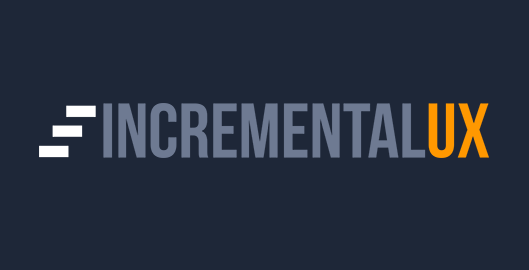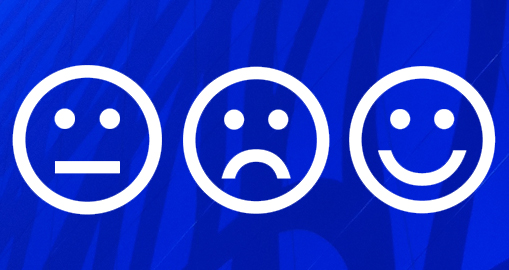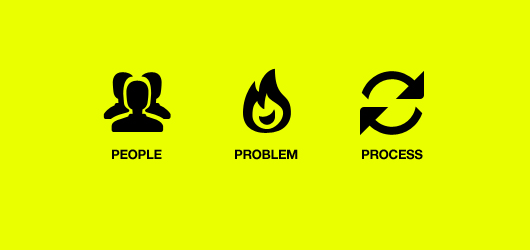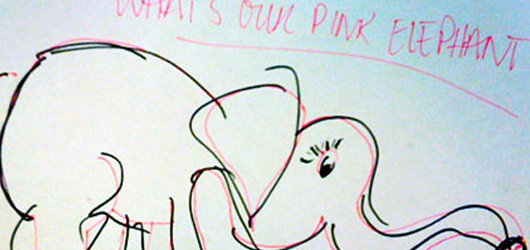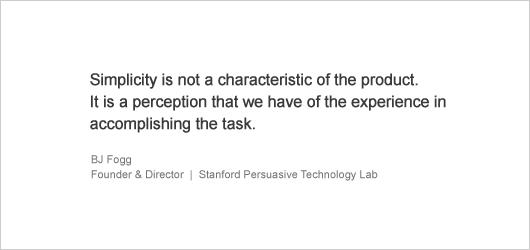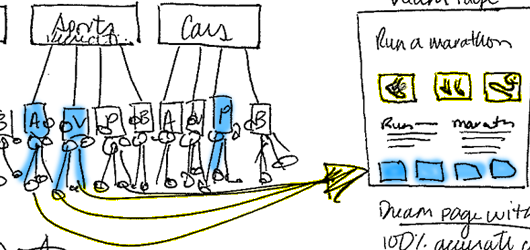Last weekend I did a 4-mile race in Central Park and got a new PR (Personal Record). I did it in 30:29 min (so 7:38/ mile average) — I was really happy with that result. What made me even happier was that a year ago I did the same race in 33:10, I was excited to see such improvement.
Spotting UX Problems In Your Day-To-Day Life
Last week I challenged you to actively look for problems to solve – whether on your commute, at the airport, in your kitchen, or anywhere you spot something that seems to be broken or lacking in experience.
Podcast: My Interview With Incremental UX About Storytelling in Product Development
A few weeks ago I got to chat with Vinay Raghu, a user experience consultant who created the podcast, Incremental UX.
The podcast focuses on getting beyond just theory and education and gets into the specific “how” of UX. How do you conduct research? How do you identify an audience? How do you create a product roadmap? The idea is that after each episode, you can implement the ideas and actually take action! Continue reading
What Is A Startup?
How would you define a start up?
I’m guessing that a lot of people would say it’s a small company, or a company just getting started, or even that it’s a young tech company. I think the term startup has been a bit popularized by the technology community. Along with that is a bit of a misconception about what a start up really is.
I recently stumbled upon a great article by Steve Blank called Why Companies Are Not Startups in which he discusses why large companies have trouble adopting and embracing innovation. The key reason he gives is that large companies are inherently different than a startup in terms of their goals and structure. As a result, the environment of a company is not necessarily conducive to innovation. Continue reading
Emotion In Product Design & Why I Love Instagram
The other day I logged into Facebook and literally nearly every single post was of someone’s Facebook Movie. If you don’t know what that means, in celebration of turning 10, Facebook created a movie for each of their members which highlights the member’s top posts, photos, and moments. It’s cute in theory, but when you see 20 of them in a row in your newsfeed, it’s not that exciting.
A walk down memory lane is fun when I watch my own memories, but not very fun when I watch other people’s memories.
If I didn’t have the career that I have I doubt that I’d actually use Facebook at all — I’m a fairly private person and I don’t share a lot. I am mainly on Facebook to research and observe.
I really don’t care to consume a lot of the content on Facebook, I find it to slants a little too negative for me — too much venting, too surface level, and a bit too polarizing.Continue reading
3 Tips For Companies Looking To Hire A User Experience Designer
User experience design continues to be one of the hardest jobs to fill. Companies are realizing the value that creating a great user experience can have on their business. Today, people more than ever expect, and demand, a great experience. This is an exciting time for the industry. However, as companies race to create great user experiences, I’m concerned that the quality of the experiences could be jeopardized.
I’d guess that the rise in demand for user experience designers is being fueled significantly by companies who finally realize the value of focusing on creating a great user experience. But, as companies seek to improve their user experiences, they face a huge challenge in actually finding candidates. Of course, supply and demand is a key contributor to this problem.
However, the greater problem is that most companies don’t truly understand the exact skill set within user experience design that their company specifically needs. Companies are walking blind into the hiring process – and that’s scary, for everyone involved.
So how can we help solve this problem?
How can companies truly understand the role of user experience in their organization? And from this knowledge, how can companies be sure they are hiring the correct person for their team? Continue reading
Thoughts About “Best Practices” In User Experience Design
I recently started co-teaching 12 week class on User Experience Design in partnership with General Assembly. One of the most common questions the students ask is for concrete Best Practices about UXD. It’s been really challenging to try and identify Best Practices, simply because of the breadth of content we’re covering. So, this got me thinking, do Best Practices exist and does the idea of them distract us from more valuable learnings?
The idea of Best Practices implies that if you do a set thing, a set result will occur. It makes us believe that there is a rulebook for how to successfully design an experience. In reality, I’ve never been one to follow the rules, maybe it’s why I love designing experiences so much.
I think we need to do everything we can to try and shift the impression that there are “rules” for how to do what we do. Because the truth is, and we all know it, there is no one way to do what we do. So much of what we do is about problem and solve, about try and try again, about incrementally moving forward. We ultimately design for people, and people are different. Continue reading
Why Everyone Can’t Be A User Experience Designer
As the Internet and technology because more tightly woven into the fabric of people’s everyday lives, a false sense of knowledge rises. This is a rising challenge for the user experience designer – trying to balance input from vaguely informed stakeholders who passionately believe they know what’s right, just because they use the medium.
Seasoned user experience designers know that education is a large portion of your job and deliverables. You continually find yourself explaining “why” things are the way they are. But today, the element of education as a part of the user experience design’s job is more present than ever. The reason is that we have a breed of people who use the Internet who feel as though they know best. Therefore, they are armed with feedback and input – we’ve all heard it …. “but that’s how they do it on Facebook”, “it can’t be that hard”, “what do you mean it will take a week”. Continue reading
The Perception Of Simplicity
Lately I’ve been reading and studying the idea of how people can change their lifestyles through measured behavior, or what I call Personal Metrics. At the heart of Personal Metrics is the need for persuasion, whether aligning a new idea, adopting a new attitude, or modifying their behavior.
In my research, I’ve discovered the work of BJ Fogg who coined the idea of Captology, which is the study of computers and their use as persuasive technologies. As Founder & Director of the Stanford Persuasive Technology Lab, Fogg helps create insight into how computers and technology can be designed to change what people believe and what they do.Continue reading
Immediacy Of Innovation
The economics of digital technology are launching us into an era where, according to a recent Wall Street Journal article, “passive analysis will be subordinate to active participation”.
Technology is transforming innovation as both the costs and time to innovation are much more accessible to companies who seek change and rapid feedback. Moving away from formal, drawn out, plans and analysis – expect to see more rapid prototyping, agile development, and environments driven by experimentation.
These changes will have great effects on culture as innovation will not just be the focus of a traditional research and development group – but, instead, it should be a central element to a company’s culture. People’s perspectives will be focused less on the future and more into the immediate because they will be able to see the cause and effect of ideas and changes right away, instead of speculated over formal processes and hours in conference rooms.Continue reading


